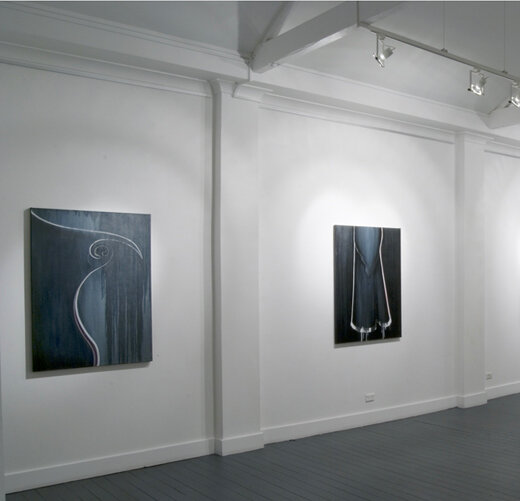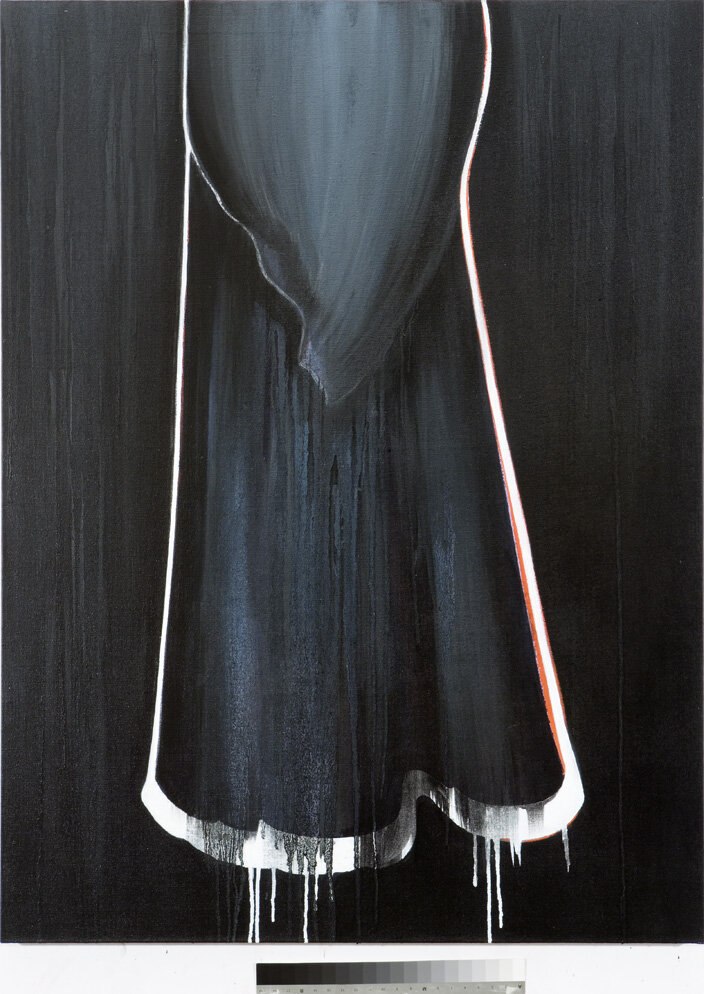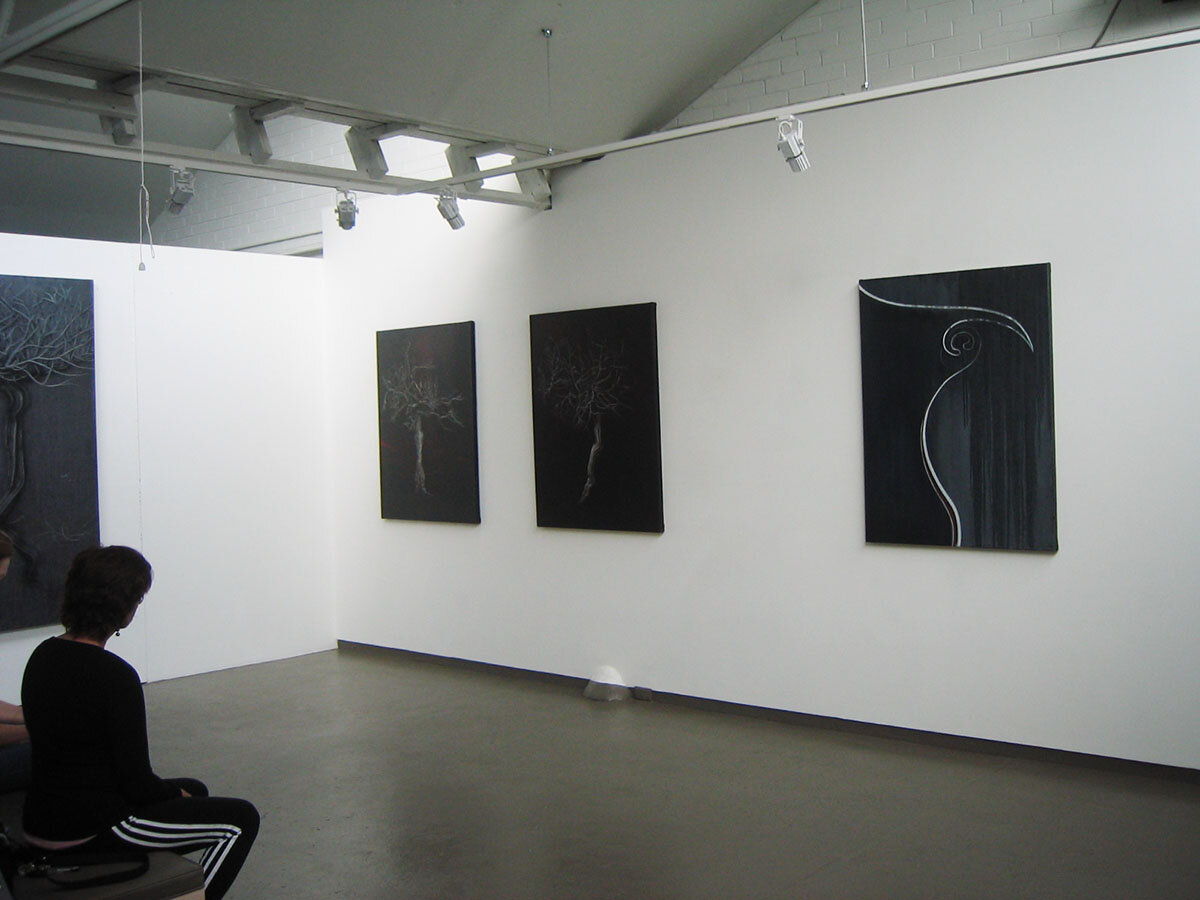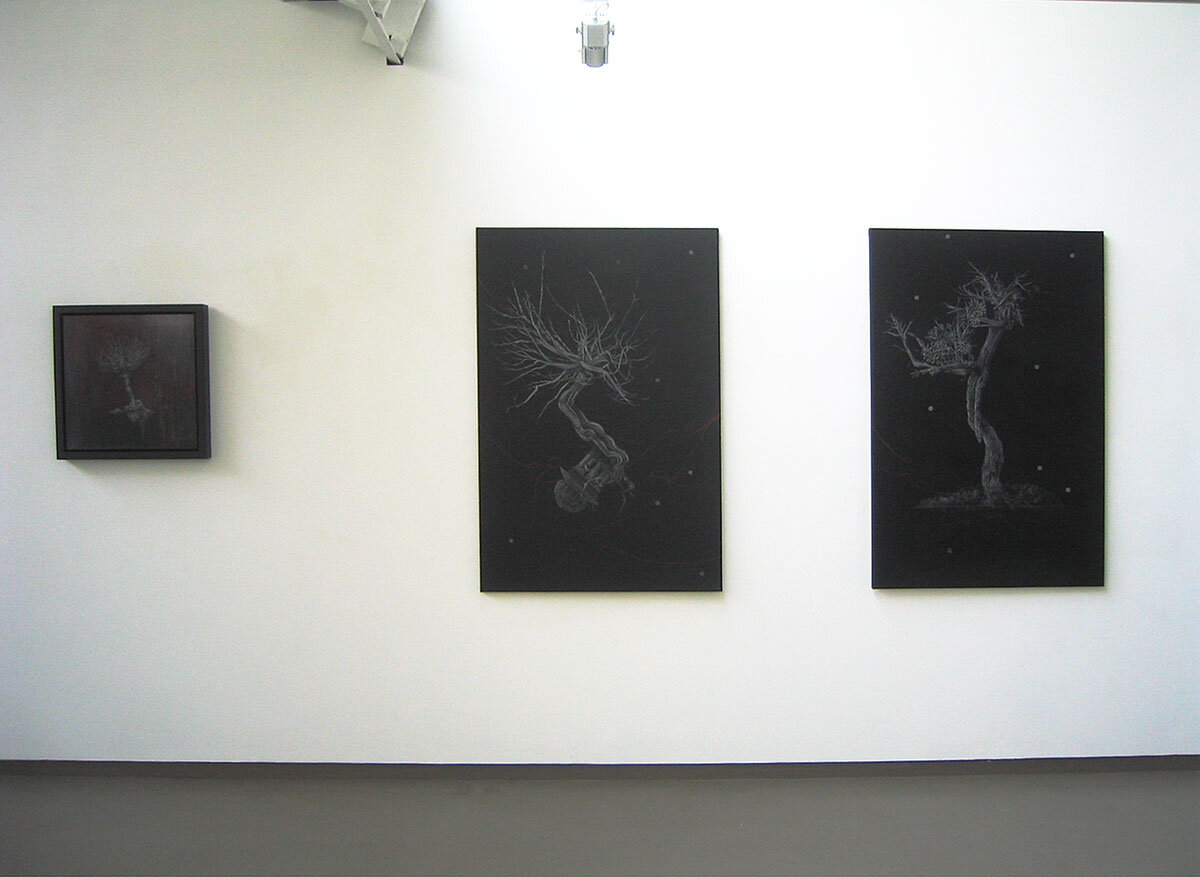2008
EDGE Charles Hewitt Gallery, Sydney 15 May - 3 June
CHG Installation View 1 Level 1 stairway to Raised Gallery Platform
'Country#1' 2007 oil, metallic powders on Belgian linen 50 X 50 cm _sold
Tales of Splendour and Dust#6 2008 silver pencil, acrylic on synthetic canvas
CHG Installation view 2 of wall of silver pencil drawing series
Tales of Splendour and Dust#8 2008 pencil, acrylic on synthetic canvas 141 X 92. Added layers of wash & spray paint to background in 2019
Tales of Splendour and Dust# 5 141 x 92 cm framed _ sold
CHG Installation View 4 Gallery 1 facing back wall
Tempest#2 2008 acrylic, oil on Belgian linen 168 X 122 cm _sold
CHG Installation View 5 Right of central gallery
Windsong 2007 oil on Belgian linen 122 X 92 cm (framed) _sold
CHG Installation View 6
Blackbird 2008 acrylic, oil, metallic powders on Belgian linen 122 X 92 cm (framed) 122 x 92 cm _sold
Flight#1 2008 acrylic, oil, metallic powders on Belgian linen 122 X 92 cm _sold
2007
EDGE Anita Traverso Gallery, Melbourne 5 - 22 December
Cassandra 2007 oil, metallic powders on Belgian linen 58 X 58 framed _sold
ATG Installation View 1
Flight#2 oil, metallic powders on Belgian linen 122 X 92 cm _sold
ATG Installation View 2 'Windsong' & "Walpa#1'
'Walpa#1' 2007 oil on Belgian linen 122 X 92 cm_artist's collection
Tales of Splendour and Dust#3 2007 pencil, acrylic on synthetic canvas
ATG Installation View 4
And darkness winds between the footings #2 2007 oil, metallic powders on Belgian linen framed 58 X 58 _sold
Edge 2007 oil, metallic powders on Belgian linen (framed) $6,000
And darkness winds between the footings#1 2007 oil on Belgian linen framed 58 X 58 cm _artist's collection
During Gabrielle Courtenay’s month alone in the isolated desert country of Fowlers Gap, with its fierce heat and winds, she became aware of the many symbolic meanings distilled in the tortured forms of its dried saltbush. In Edge, she has transformed these tiny skeletons of plants into bewitching forms of poetic beauty, and in doing so has reinvigorated and updated the long tradition of vanitas painting.
When I first saw these new paintings, I was immediately reminded of some remarkable examples of vanitas I’d seen in St Petersburg’s Museum of Ethnography. They’d been created by a pioneering 18th century Dutch anatomist, who was obsessed with the body’s arterial system, which he referred to as ‘God’s drawings’. From the treated capillaries, arteries and veins of the corpses of deformed infants, he constructed elaborate, fantastical gardens, peopling them with tiny foetal skeletons. Macabre as they are, these assemblages have poignancy to them, for like Courtenay’s paintings they are reminders of the fragility and ephemeral nature of life. At the same time, the similarities between the anatomist’s branch forms and Courtenay’s visceral saltbush branches to the underlying interconnectedness of all living things.
Courtenay’s paintings, however, extend these traditional meanings of vanitas into the 21st century. They invite us to meditate upon the destruction of the landscape through drought, clearing and over-farming; the creation of, in the words of Italo Calvino, an endless, formless ruin. The image in And darkness winds between the footings #1, looks as if it’s about to be whisked away by the wind. And while the splendid colonial buildings in the grips of the ghostly plant’s roots refer bot tho Courtenay’s architectural background and nature’s interconnection with human history and culture, they also carry a sense of the ever-present threat to our architectural heritage. One of the most aesthetically engaging aspects of these paintings is their eloquence of line, whether it be the tortured forms of the saltbush or the looping red calligraphy of an ill-wind that blows from the past, through the present and into the future.
Victoria Hammond, 2007.
























